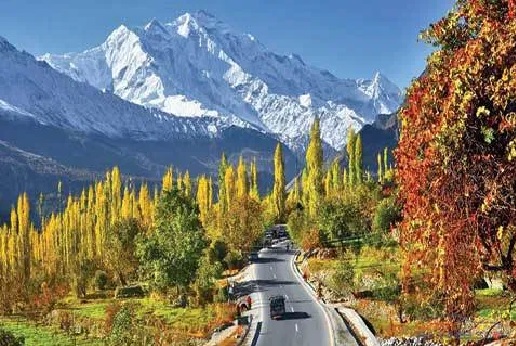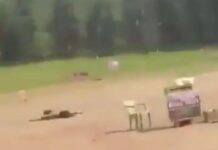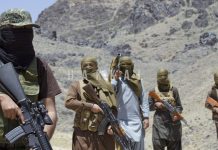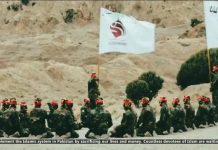New Delhi (NVI): Pakistan keeps on ranting about the Jammu and Kashmir issue at every international fora but it conveniently remains silent regarding the parts of Jammu and Kashmir under its illegal occupation.
The local people of Pakistan-occupied Jammu and Kashmir (PoJK), which also includes Gilgit-Baltistan, have been nursing angst against Pakistan and aspirations for freedom ever since these territories were illegally occupied through an invasion by Pakistan in 1947.
Highlighting the aspirations of these occupied people and other such developments related to PoJK is a new book – Forgotten Kashmir: The Other Side of the Line of Control. The book, authored by retired diplomat Dinkar P Srivastav, also flags Pakistan’s international commitments.
It does so in the light of largely the Pakistani and international sources. This includes memoirs of Maj. General Akbar Khan, Yusuf Saraf, a Muslim Conference activist, Sardar Ibrahim Khan, the first President of POK, Qudrutallah Shahab, ICS, who headed the President’s Secretariat for 11 years in Pakistan, President Ayub, and a host of others. These people shaped events and enjoyed an insider’s view of Pakistan.
Akbar Khan, then a Colonel in Pakistan Army, had led the forces which invaded Jammu and Kashmir on October 22, 1947 under the garb of ‘tribal raid’ under the pseudonym of ‘General Tariq’.
Yusuf Saraf was sent by Muslim Conference leadership to seek arms from NWFP chief minister SardarQaiyum Khan. He later became chief justice of the POK Supreme Judicial Council.
Sardar Ibrahim served as POK’s President for 4 terms. Qudrutullah Shahab was the POK’s first ‘Secretary-General’ – a title he admits modestly was self-assumed.
The principal sources also include the POK constitution, Gilgit-Baltistan Orders, and key judicial decisions of the POK High Court and Pakistan Supreme Court.
The book covers events of the early years of 1947, including the invasion of J&K and setting up of POK provisional government.
The discussions in the UN Security Council are examined in the light of developments on the ground.
One of the most intriguing aspects is Pakistan’s refusal to accept plebiscite when India was prepared to consider it in 1950 and 1953.
Why was Pakistan reluctant to risk plebiscite, especially when Indian Prime Minister Jawaharlal Nehru agreed to it during talks of 1953? The date was significant since this was after Sheikh Abdullah’s dismissal.
The 1971 war was a turning point in Pakistan’s history. This was followed by the Simla Agreement, the adoption of Pakistan’s Constitution in 1973, and POK’s Constitution in 1974.
The book brings out the debate in the Pakistan National Assembly and speeches of President Bhutto and the opposition leaders. What did Bhutto have to say about UNSC resolutions on J&K?
How far POK Constitution and Gilgit-Baltistan Orders reflect the ‘Azadi’ sentiment and ‘the wishes of the people’? The book brings out that the area is already integrated in Pakistan, which directly exercises powers within POK.
Gilgit-Baltistan was controlled directly by Pakistan since its inception. What is the impact of CPEC on the region’s economy and polity? Has Pakistan Supreme Court’s intervention increased political space for the people of POK or simply strengthened Pakistan’s control? Why is POK paid a fraction of the rate paid to Pakistan’s provinces for water – the region’s chief economic resource? How will the interplay of ideology, Pakistan’s strategic interest, and CPEC affect the future of the people of POK?
Overall, the book reveals a lot about PoJK which Pakistan would like to hide.








